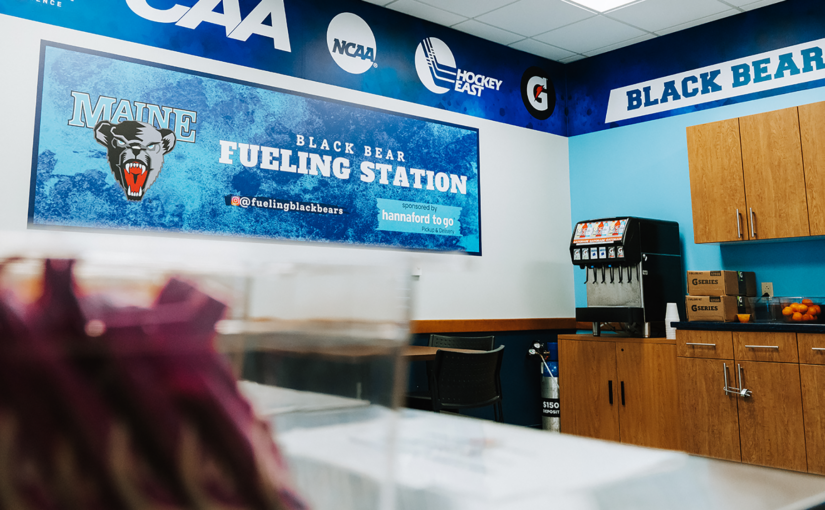Revenues Up 72% For UIL State Football Tournament (Texas), Tops $1.5M
ARLINGTON — More than 200,000 fans are expected at Cowboys Stadium for the University Interscholastic League’s 11-man football championships, with nine games over three days drawing the state’s best teams to the world’s glitziest football stadium.
All but two of this year’s title games will be on Fox Sports Southwest’s main feed, certain to draw one of the state’s largest television audiences ever to watch high school football.
The sport — long a pillar of the Texas experience — has become more of a spectacle in recent years, thanks, in large part, to the symbiotic relationship between television coverage and collegiate recruiting.
Football has always been big, but its increased exposure has been dramatic.
“There’s more money involved, more coverage, advertisement, recruiting interest,” Highland Park coach Randy Allen said.
And don’t expect the spotlight to diminish any time soon. The UIL and its broadcast partners are planning incremental changes over the next year on how football hits the airwaves.
Central-site success
Much has been made about Cowboys Stadium serving as the single-site location, and deservedly so.
“For those little guys [schools], it’s just ‘wow!’ special,” Euless Trinity coach Steve Lineweaver said. “I can’t help but think it’s great for them, playing in the greatest venue in the world. We still get excited to play there.”
But the genesis of a single site for state championships wasn’t merely to create a fan-friendly event; it was also designed for television, doing away with the need to have several TV crews across the state.
The UIL started hosting the Class 5A title games at a central site in 2006, in part as a concession to get a television contract for both games.
The concept was expanded in 2010, when all the 11-man championship games were held in one area, with 5A, 4A and 3A games held at Arlington’s Cowboys Stadium and 2A and 1A games at Mansfield’s Vernon Newsom Stadium.
For the first time in 2010, FSSW — which has televised the 5A championships since 1994 — broadcast all of the games either on television or the Internet, including six-man title games in Abilene.
Jon Heidtke, senior vice president and general manager of Fox Sports Southwest, said that ratings for the games over the last two seasons have been good, comparable to the network’s NBA coverage.
And Cowboys Stadium has been a boon for the UIL and participating schools.
Revenues from last year’s state tournament were $1,513,428, a 72 percent increase from 2010. The league also divided $703,843 among schools that participated in the 2011 finals, allocated by ticket sales for each respective game.
“Certainly, attendance-wise, it’s doing how we hoped it would,” UIL athletic director Mark Cousins said.
Growing TV presence
While fans clamor for more and more regular-season and playoff games to be televised, games on TV still aren’t commonplace.
The reason, according to Heidtke, is money.
Because of the hyper-local nature of most high school sports, no one has found a way to successfully translate marquee games into big ratings.
One way networks have tried to push high school games into the mainstream is by emphasizing college recruiting.
Over its various platforms, ESPN has broadcast 30 to 40 national games in each of the last two seasons; the network’s focus, associate communications manager Gracie Blackburn said, is to find matchups between nationally recognized opponents, or to focus on schools with FBS prospects.
On the statewide level, the number of games featuring Texas teams is relatively small.
Of approximately 1,000 games in the Dallas-Fort Worth area this season, fewer than 30 were televised — shown live on Thursday nights or delayed Friday and Saturday (the UIL bans live Friday night broadcasts during the regular season).
When games are shown, it can be a mixed blessing for coaches and administrators.
While the fans and players love it, the schools rarely make money on the broadcast, logistical hurdles can be cumbersome, and game play can be affected, Allen athletic director Steve Williams said.
DeSoto and Southlake Carroll administrators and coaches declined an offer for a live broadcast by FSSW of the Class 5A Division I regional final, for fear it would slow both teams’ hurry-up offenses.
Fast forward?
In October, the UIL’s legislative council began to move the league’s television policies forward. The council passed amendments that expanded the league’s rights to include all the rounds of the playoffs and eliminated the sellout rule — which required televised playoff games to be sold out 48 hours in advance of game time.
With a full postseason, Heidtke said he hoped to create story lines that would draw the general fan to attend a state title game at season’s end, with the goal of breaking the all-time attendance record in mind.
“We want to capture that statewide feel and create something that could build to a crescendo here at Cowboys Stadium,” Heidtke said.
A more ambitious plan could be in the works for Friday nights in the regular season. Heidtke said he is optimistic that FSSW and the UIL can negotiate alterations to the current contract, which expires in 2015, allowing them to have a Red Zone-like show on Fridays, with live cut-ins from games across the state.
Making any changes to the regular-season Friday night ban isn’t on the agenda now, UIL deputy director Jamey Harrison said in October.
“Certainly, the world is changing,” Harrison said. “So you can certainly see something in the future. But we are going to have to see how this goes first.”







